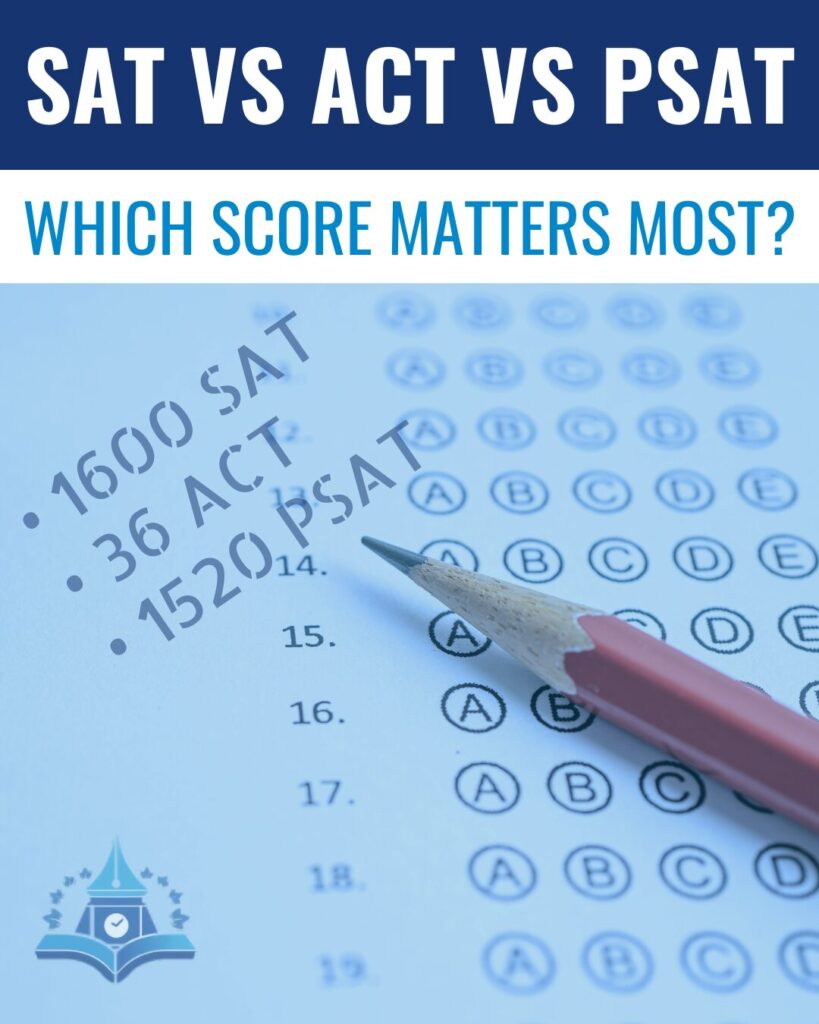In the world of college admissions, there are nearly infinite methods and rubrics that universities use to evaluate applications. While the review process is holistic, considering academics, extracurricular activities, and more, many schools feel the need for a universal measure or evaluation tool. Is an ‘A’ at your high school equivalent to an ‘A’ at the neighboring high school? Is it the same as an ‘A’ at an independent school across the country? What about an ‘A’ from across the world?
It is natural for schools to use different academic grades and evaluation systems, as philosophies in the academic arena are plentiful and ever-evolving. With that in mind, how do universities compare applicants from such diverse high school settings? In many cases, universities rely on the use of standardized tests (SAT or ACT).
This article will explore the relationship between the two most prominent standardized tests: the SAT and ACT, as well as understand how the PSAT informs the SAT.
Understanding the SAT, ACT, and PSAT

SAT
The SAT consists of two sections: Evidence-Based Reading and Writing and Math. Each section has a score range of 200 to 800, leading to a total overall score range of 400 to 1600.
When looking at the top 20 schools in the country, most universities are seeking applicants with a total SAT score of 1540-1600.
ACT
The ACT consists of four sections: English, Math, Reading, and Science. Each section has a score range from 1 to 36. The ACT Composite Score is the average of the four scores, with the same range of 1 to 36. There is also an optional Writing section (score range from 2-12), which is not included in the Composite Score.
When looking at the top 20 schools in the country, most universities are seeking applicants with a Composite score of 35 or 36.
PSAT
The PSAT, or the Preliminary SAT, is a practice version of the SAT. Similar to the SAT, the PSAT consists of two sections: Evidence-based Reading and Writing and Math. A key difference between the PSAT and SAT is the scoring range. Each individual section of the PSAT has a score range of 160 to 760, with a total score range of 320 to 1520.
Students’ scores are compared by grade level, whereas the SAT is across all grade levels. To understand further, let’s look at students performing in the 99th percentile of the PSAT. Grade 10 students who rank in the top 1% of all PSAT test-takers earn a score range of 1420 to 1520, whereas Grade 11 students who rank in the top 1% have a score range of 1490 to 1540.
SAT vs. ACT Conversion Chart
| SAT Score | ACT Composite Score |
|---|---|
| 1600 | 36 |
| 1560 | 35 |
| 1520 | 34 |
| 1480 | 33 |
| 1440 | 32 |
| 1400 | 31 |
| 1360 | 30 |
| 1320 | 29 |
| 1280 | 28 |
| 1240 | 27 |
| 1200 | 26 |
| 1160 | 25 |
| 1120 | 24 |
| 1080 | 23 |
| 1040 | 22 |
| 1000 | 21 |
| 960 | 20 |
| 920 | 19 |
| 880 | 18 |
| 840 | 17 |
| 800 | 16 |
In the above Conversion Chart, you will see the relationship between SAT and ACT scores. For example, a student who earns a 1500 on their SAT will be read similarly to a student who earns a 34 Composite score on their ACT.
How can you best utilize this information? Before you take an official version of either the SAT or ACT, it is recommended that you take a full-length practice test for the SAT and the ACT. Once you have your scores from each practice test, access the correspondence table to identify which test you performed better on in relation to the other – this is the test to prepare to take officially!
PSAT vs. SAT Conversion Chart
| PSAT Score | Estimated SAT Score |
|---|---|
| 1520 | 1600 |
| 1480 | 1560 |
| 1440 | 1520 |
| 1400 | 1470 |
| 1360 | 1430 |
| 1320 | 1390 |
| 1280 | 1350 |
| 1240 | 1310 |
| 1200 | 1270 |
| 1160 | 1230 |
| 1120 | 1190 |
| 1080 | 1150 |
| 1040 | 1110 |
| 1000 | 1070 |
| 960 | 1030 |
| 920 | 990 |
| 880 | 950 |
| 840 | 910 |
| 800 | 870 |
| 760 | 830 |

So, how does the PSAT fit into this discussion? Often offered or required for high school students in 10th or 11th grade, the PSAT is a shorter version of the SAT that offers valuable insight into how a student will perform on the actual SAT. As shown in the conversion chart above, a student’s PSAT score corresponds to a potential SAT score. While this chart does not precisely predict future performance, it provides useful information for students as they begin to consider universities and understand their current standing. For instance, if you take the PSAT as an 11th grader and score 1400, you might expect to achieve around a 1470 on the SAT if taken on the same day. If you’re pleased with that score, that’s great, but if you want to achieve a higher score on your SAT, it’s time to start preparing for your upcoming exam!
What do I do next?
Understand that standardized testing is an integral part of the admissions process. While many schools moved to test-optional policies for a few years, there is a clear trend of universities returning to mandatory testing policies. With this in mind, utilize the information above, select the best standardized test for you, and begin preparations! If you need any assistance with your application, why not contact us today?

Former Admissions Reader at Northwestern University
Former Director of College Counseling at Dwight-Englewood School
1 Year at Northwestern University Admissions
2 Years at Dwight-Englewood School
1,000+ Applications Read and Evaluated
Matthew has worked with thousands of students and families through their college process for over a decade. Matthew served as the Head of Counseling at the United States Consulate affiliate School, the American School of Dubai (ASD), as well as Director of College Counseling at one of the top independent schools in the Tri-State region.



